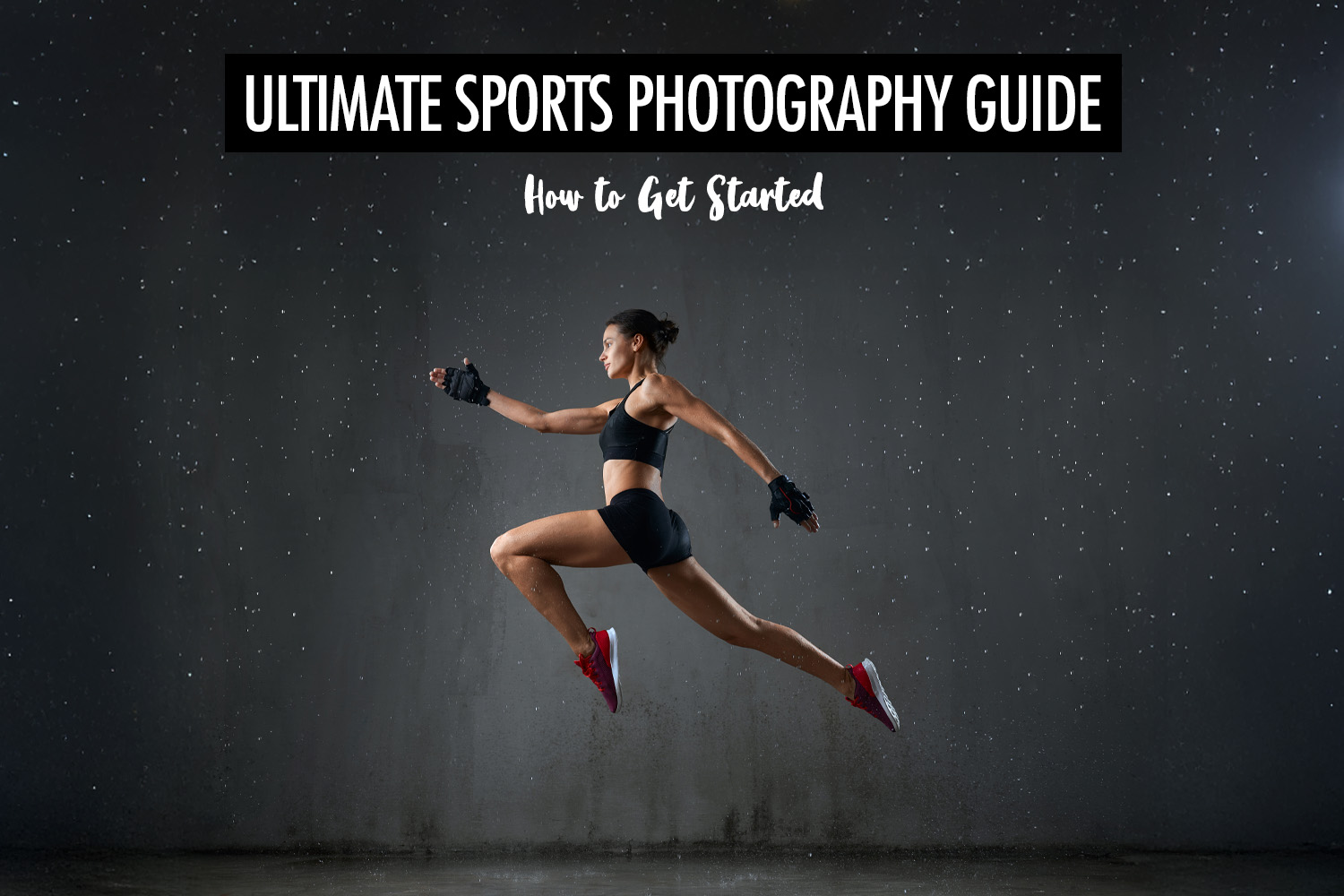Sports have always carried a unique kind of energy—the roar of the crowd, the heat of rivalries, and the fleeting plays that become lifelong memories. For sports photographers, the challenge is to capture that energy through the lens.
On one side, there’s the fast, unpredictable chaos of the game, where everything shifts in an instant. On the other, there’s the quieter world of the studio or sideline photoshoot, where athletes step away from the noise to reveal who they are beyond the scoreboard. Together, these moments define sports photography: a balance of raw intensity and personal story, competition and identity.
Sports photography is more than pointing a lens and pressing the shutter. It requires technical mastery, balancing speed, light, and composition under conditions that rarely give second chances. The work is demanding, whether it is freezing a decisive play under harsh stadium lights or bringing out an athlete’s personality during a portrait session. Behind every image is a set of decisions that combine craft, creativity, and timing.
At the same time, sports photography is also a business. Success means knowing how to get in front of the right clients, deliver images quickly, and stand out in a market filled with competition.
In this article, we walk you through the full scope of sports photography, from the adrenaline of action shots to the artistry of athlete portraits, and from the technical details behind the camera to the strategies that help photographers build a successful career.
Essence of Sports Photography
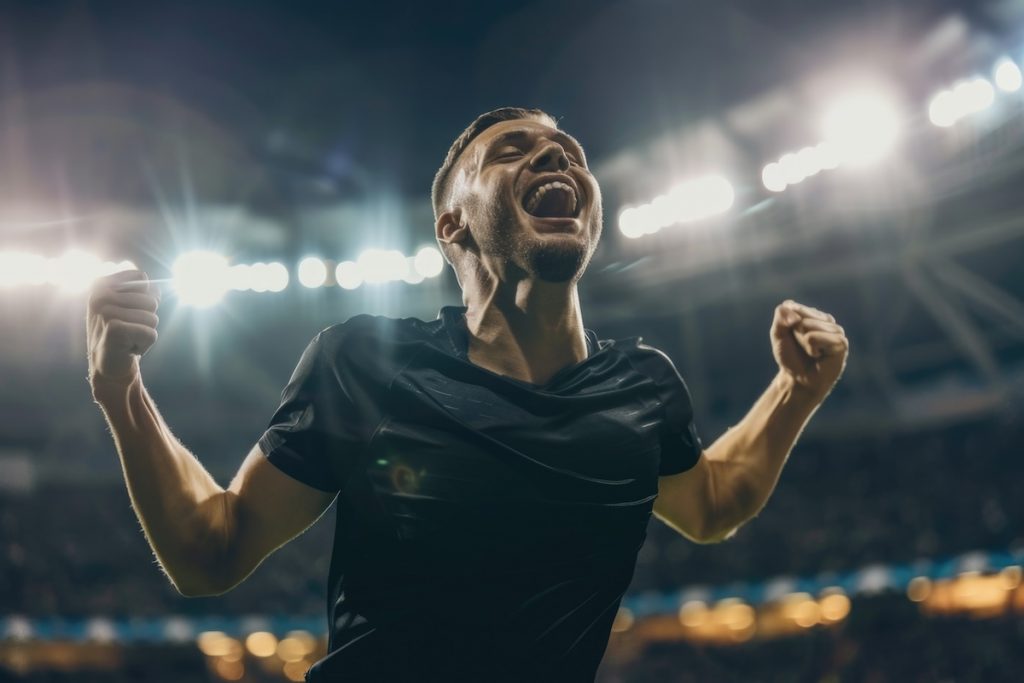
Sports photography is about more than documenting a game; it is about preserving moments that carry meaning. A single frame can hold the rush of victory, the heartbreak of defeat, or the quiet focus that comes before an important play begins. These are the images that give fans something to relive, athletes something to be proud of, and teams something to remember long after the final whistle.
What makes this niche unique is the balance between two very different types of storytelling. Action shots capture the movement and emotion of the sport as it unfolds, freezing time in a way that highlights intensity and drama. Portrait sessions, on the other hand, step away from the chaos to give athletes a platform to show who they are beyond the uniform. Both sides are equally important, and together they create a fuller picture of what sport really means.
Capturing the Action
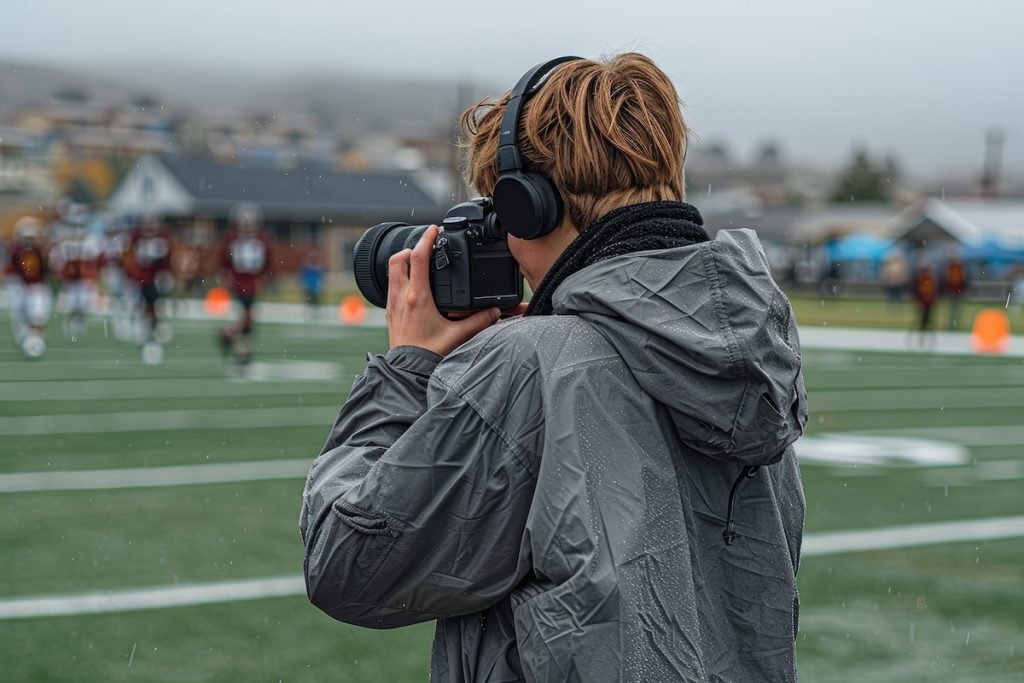
Capturing sports as it happens is both exhilarating and demanding. Unlike a studio photoshoot where everything can be carefully arranged, the sidelines leave no room for second chances. The game moves quickly, and the difference between a great shot and a missed opportunity often comes down to anticipation.
That anticipation grows out of understanding the rhythm of the sport. The best photographers know when to expect the decisive moment, whether it is a striker lining up a shot, a basketball player driving to the hoop, or a sprinter exploding out of the blocks. By reading the flow of play, they position themselves to be ready before the action even unfolds.
Timing alone, however, does not guarantee success. The technical side is equally crucial in shaping powerful action shots. Fast shutter speeds help freeze motion, while slowing things down can create a sense of energy and movement. Autofocus tracking keeps up with athletes at full speed, and burst mode ensures that no critical frame slips away. Add to this the challenge of harsh stadium lights, unpredictable weather, or dim indoor courts, and adaptability becomes a vital skill. Balancing aperture, ISO, and shutter speed under pressure is what separates a sharp, impactful photo from one that misses the mark.
Where you choose to stand also makes a world of difference. The sidelines, behind the goal, or even higher up in the stands each tell a different story. A poor vantage point can leave shots feeling flat, while the right angle can bring images to life and immerse the viewer in the moment. Once you have the angle, composition is what ties everything together. A close crop on an athlete’s expression can capture raw emotion, while including the crowd or teammates adds context and heightens the drama.
Of course, sports photography is not just about the action on the field. The people around the game—fans, coaches, mascots, even food vendors—help tell the fuller story. These small details, often overlooked, make the event feel more alive and transport the viewer into the atmosphere of the day. In the same way, great sports photography does more than document a play; it tells a story. Sometimes it is the individual journey of a single athlete, other times it is the collective spirit of a team celebrating victory or rivals pushing each other to the limit. These moments of connection are what make images resonate long after the final whistle.
Professionalism also plays a role in capturing action the right way. Sports photographers are guests in the environments they cover, and respect goes a long way. Officials, coaches, athletes, and staff all have jobs to do, and the last thing they need is a photographer getting in the way. Following instructions keeps the event running smoothly and ensures you are welcome in the future. Any disagreements can always be handled after the game, but in the moment, professionalism must come first.
Equally important is awareness. Sporting events are unpredictable, and the sidelines can be dangerous if you are not paying attention. A stray ball or a player crashing out of bounds can reach you in an instant. Keeping your head up and your focus on the game protects both you and the athletes. Checking your phone or reviewing shots can always wait until the action is over.
Respect also extends to how you use your gear. Flash has no place in live sports coverage. A built-in flash, or even a unit mounted directly on the camera, does little to light distant subjects and can become a distraction for athletes and spectators. Working with natural light or adapting to the venue’s setup keeps attention where it belongs—on the game itself.
And even when the game ends, the work continues. Post-processing is the final step in bringing action photos to life. A thoughtful crop or a subtle adjustment to lighting and color can elevate your best shots, sharpening their impact without altering the authenticity of the moment. Heavy manipulation is rarely needed, but refining your images ensures they are presented at their very best.
When technical skill, creative instinct, and professional awareness come together, sports photography becomes something greater than documentation. Each frame does more than show what happened—it pulls the viewer into the heart of the game, letting them feel the energy, emotion, and story of the sport itself.
Sports Photoshoot Sessions With Athletes
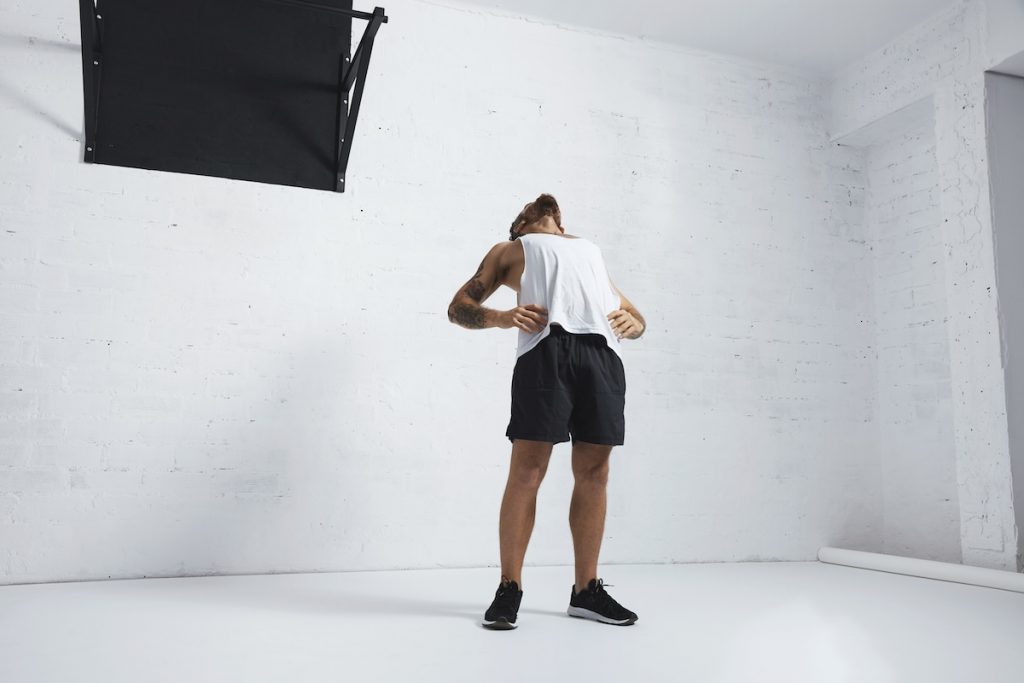
Sports photography extends beyond the split-second drama of action shots. When the game ends, athletes still need to be photographed in ways that define how they are seen by the public. From media day portraits to sponsorship campaigns, these sessions provide the polished imagery that fills posters, websites, and social feeds. They are less about capturing action and more about crafting a professional image that represents both the athlete and their team.
In these moments, control replaces unpredictability. Photographers set the stage with lighting setups, backdrops, and creative direction to ensure that the final result aligns with the intended purpose. While the technical side matters—softboxes, reflectors, and well-placed strobes—what often sets a shoot apart is how comfortable the athlete feels in front of the camera. Many are not used to posing, so building rapport and giving clear but simple instructions helps bring out expressions that feel natural rather than forced.
Posing is its own challenge. Static portraits are common, but injecting a sense of movement or personality makes the shot stand out. A runner crouched at the blocks, a basketball player gripping the ball, or a goalkeeper leaning forward with focus communicates their role in the sport without needing the game around them. The key is to strike a balance between stylized imagery and authenticity, so the photos remain true to the athlete’s identity.
Location adds another layer of storytelling. A studio offers consistency and control, but outdoor or on-site sessions bring context and character. Shooting on the field, in the locker room, or even in urban settings can highlight the grit and individuality of an athlete in ways a neutral background cannot. The choice ultimately depends on the goals of the sports photoshoot, whether the aim is timeless branding or a more personal, behind-the-scenes feel.
Together, these photoshoots complement the fast-paced action shots captured during live play. The two sides of sports photography work hand in hand—one showing the raw intensity of the competition, the other presenting athletes as professionals, personalities, and ambassadors of their sport. When combined, they create a fuller narrative that resonates with fans, brands, and media alike.
If you’re looking to take this a step further, we’ve put together guides to photographing athletes across different sports. From planning your session to pose ideas and creative setups, these resources cover everything you need to confidently approach a sports photoshoot.
- Ultimate Baseball Photoshoot Guide: 30+ Tips, Poses and Ideas
- Ultimate Basketball Photoshoot Guide: 30+ Tips, Poses and Ideas
- Ultimate Football Photoshoot Guide: 30+ Tips, Poses and Ideas
- Ultimate Soccer Photoshoot Guide: 30+ Tips, Poses and Ideas
- Ultimate Gymnastics Photoshoot Guide: 30+ Tips, Poses and Ideas
- 30+ Volleyball Photo Poses, Ideas and Tips for the Perfect Photoshoot
- The Ultimate Guide to Marathon Photography
Technical Mastery in Sports Photography
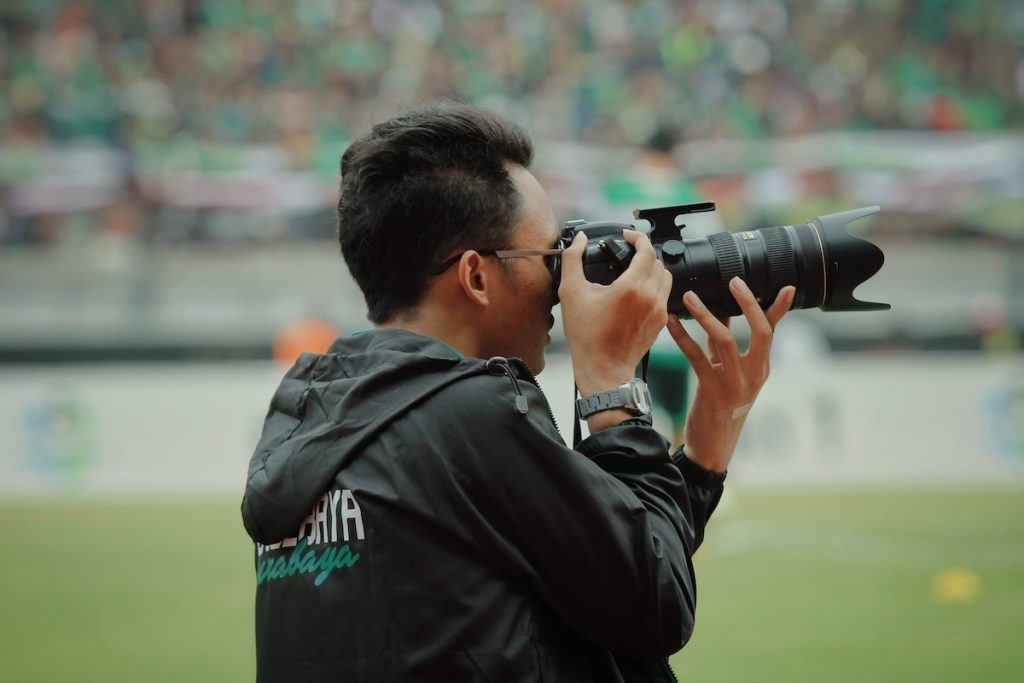
Mastering the technical side of sports photography is what allows creativity to shine. Whether you are capturing the intensity of a live game or shaping a sports photoshoot session, the fundamentals—settings, lighting, composition, and workflow—determine the final quality of your images.
Camera Settings
For action shots, speed is everything. A fast shutter speed between 1/500s and 1/2000s ensures motion is frozen, while continuous autofocus and burst mode help track unpredictable movements without missing the decisive moment. You will usually have a large aperture and variable ISO depending on the lighting, to keep images sharp even when the environment is working against you.
In sports photoshoot sessions, the approach shifts toward control. Instead of reacting to unpredictable play, you can fine-tune aperture for depth of field, lower ISO and adjust shutter speed to work optimally with your chosen lighting setup.
Lighting
Sports events often come with inconsistent or harsh lighting. Stadium floodlights, indoor gyms, or outdoor fields at dusk require quick adjustments to capture natural colors and preserve detail. Position yourself so the light works in your favor—for example, place the sun in front of your subjects to illuminate them. If the sun is behind them, achieving proper exposure becomes much more difficult.
In sports photoshoot sessions, photographers have the upper hand—studio strobes, softboxes, or even outdoor golden hour setups can be planned in advance to flatter the athlete and deliver consistency. The challenge becomes less about chasing the light and more about shaping it to fit the story you want to tell.
Composition
During the game, composition often means working with what is unfolding in front of you. Cropping tightly on a player’s expression or using leading lines of the field can bring the viewer into the drama of the moment.
In a sports photoshoot session, composition becomes more deliberate. You can direct poses, play with symmetry, and build context—whether that means isolating the athlete against a simple backdrop or incorporating elements of their sport to reinforce their identity.
Editing Workflow
Action photography typically leaves you with thousands of frames. Efficient culling, sharpness checks, and color correction are essential to ensure the strongest images rise to the top. For sports photoshoots, the editing process is usually more detailed. Since the volume is lower, more time can be spent refining skin tones, adjusting contrast, and presenting a polished final image that meets commercial or personal branding standards.
Modern Tools
Technology now plays a major role in both scenarios. For action shots, AI-assisted culling and editing software speed up the turnaround, allowing photographers to deliver highlights within hours of the game. Delivery platforms like Honcho make it possible for athletes and fans to receive images instantly. In photoshoot sessions, modern AI-tools are also available to streamline retouching and ensure consistent style across an entire set, making it easier to meet client expectations and market demands.
At its core, technical mastery is about flexibility. The demands of a live game and the control of a sports photoshoot may seem worlds apart, but the principles remain the same—knowing your tools, adapting to the environment, and using technique to enhance the story. When handled well, the technical side doesn’t just support the image, it elevates it.
The Business of Sports Photography

Technical skills may get you the shot, but business skills determine whether your work reaches an audience and turns into a sustainable career. Sports photography is competitive, and success comes from knowing your market, building relationships, and finding ways to make your images stand out.
Finding Your Niche
Sports photography is a wide field, and carving out a niche helps you build recognition. Some focus on youth sports, offering families treasured memories of their children in action. Others concentrate on professional leagues, where the stakes are higher. Extreme sports, fitness competitions, and even recreational leagues all present opportunities. The key is choosing a space where your passion aligns with market demand.
Building Connections
Relationships fuel the business side of photography. Coaches, event organizers, and media outlets are often the gatekeepers to access. Making a positive impression, being reliable, and showing respect goes a long way toward securing repeat opportunities. Word of mouth is powerful in sports communities, and one satisfied client can easily lead to many more.
Marketing Strategies
After capturing the images, the next step is making sure people see them. Social media is one of the most powerful platforms for this—whether you’re sharing highlight reels, behind-the-scenes moments, or quick tips on sports photography, it helps you grow both your audience and credibility. A professional website is just as important, serving not only as your portfolio but also as a hub where potential clients can reach out, book your services, or purchase prints.
Monetization
There are many ways to turn photography into income. For youth sports, print sales are a reliable favorite among athletes and their families. At the professional level, licensing images to publications or brands can unlock bigger revenue opportunities. For ongoing work, you might provide regular team coverage or bundle your services into sponsorship packages to ensure steady income. The most successful photographers often combine several of these approaches to build both stability and growth.
Standing Out
With so many sports photographers vying for attention, differentiation is crucial. Offering instant delivery through platforms like Honcho, presenting unique perspectives from creative angles, or bundling services such as portraits and action coverage together can set you apart. Clients notice when you go beyond expectations, and those extra touches can make you the first call for future events.
Learning from Experience
With so many photographers vying for attention, differentiation is crucial. Offering instant delivery through platforms like Honcho, presenting unique perspectives from creative angles, or bundling services such as portraits and action coverage together can set you apart.
Case studies highlight how these strategies work in practice. In Rugby Photographer of the Year’s case study, Sporting Eric’s global competition with Rugby Journal and the World Rugby Museum demonstrated the power of storytelling to gain international recognition. Likewise, Successful Sports Photography Projects in Aubrey showed how consistent quality and strong relationships with local teams and the community can turn a competitive market into a steady stream of opportunities. Clients notice when you go beyond expectations, and those extra touches can make you the first call for future events.
Instant Photo Delivery and Sales With Honcho
Sports photography moves fast—on the field and behind the scenes. From action shots and team portraits to candid moments, a single event can leave you with thousands of images across players and plays. In the past, delivering those photos meant hours of sorting, uploading, and sending galleries long after the excitement had passed. Instant delivery changes everything.
Honcho is built for high-energy moments like these. Instead of waiting days, athletes, families, and fans can see their photos right away—whether it’s a game highlight, a team portrait, or a victory celebration. Photos carry the most impact when they’re delivered in the heat of the moment, while the energy is still alive.
The process is straightforward. Before the event, you set up a gallery in Honcho and generate a QR code. Organizers can distribute it, or it can be displayed on printable posters, flyers, or digital screens around the venue. Once participants scan the code and upload a quick selfie, Honcho’s face recognition technology automatically matches photos to the right person. They can even pre-register beforehand to get notified by email or WhatsApp the moment their photos are ready.

While you shoot, Honcho streamlines your workflow. You can tether your camera to upload photos as you take them. After uploading, you can instantly apply editing presets or have an assistant edit the photos with the built-in collaborative photo editor. This setup allows you to deliver polished images on the spot without interrupting your focus on capturing the game.

Honcho helps you earn more from every event by selling your photos. And because the photos are delivered live, at the height of the excitement, you capture sales when participants are most eager to buy. Everything runs automatically while you shoot—just add an online store with one click and make your gallery instantly shoppable.

The benefits extend well beyond speed. Every gallery carries your studio’s logo and contact details, turning each share on social media into free marketing. What begins as a single sports event often leads to referrals, new clients, and ongoing partnerships with teams, schools, and athletic organizations.

Honcho also helps you nurture those relationships. Built-in lead capture forms let families and fans leave their information, sign up for updates, or share feedback directly within the gallery. Instant delivery creates a positive first impression, and the follow-up tools ensure that connection continues well after the event.
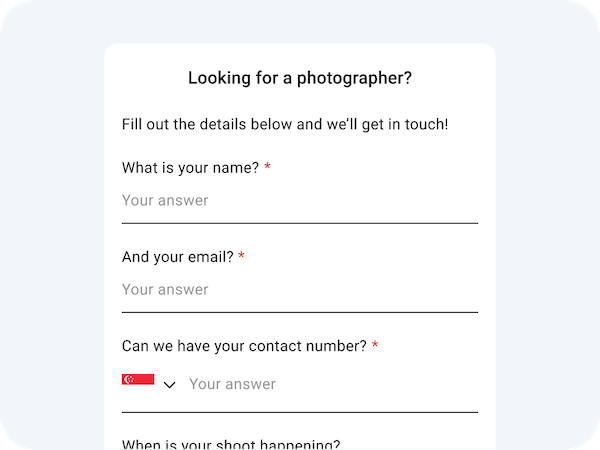
After the event, you can access analytics that show how the gallery performed. Track how many people viewed the images, which photos got the most attention, and how far the content spread online. These insights not only improve your approach for future shoots but also provide valuable data to share with event organizers and sponsors.

Using Honcho in your sports photography goes beyond instant delivery. It elevates the entire experience—making it faster, smoother, and more memorable for participants. Over time, that level of service becomes just as valuable as the photos themselves.

